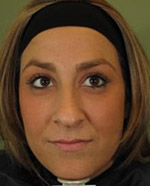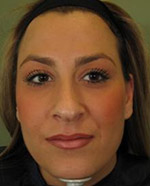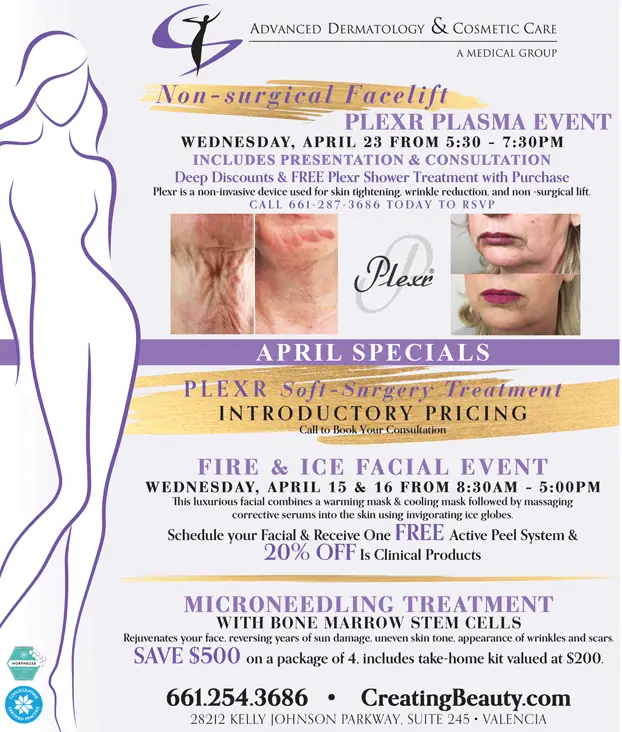Psoriasis
Psoriasis is a chronic skin disorder that causes red, scaly patches on the limbs, trunk, scalp, and other parts of the body. It is not contagious.
The rash of psoriasis goes through cycles of improving and worsening. A period of worsening is called a “flare”. At times, psoriasis can be disfiguring, uncomfortable, and even painful.
The scaling and unpleasant appearance of psoriasis lesions (especially if left untreated) can cause embarrassment and be a significant source of anxiety or depression. Psoriasis can also interfere with sleep and make everyday tasks difficult.
Types of psoriasis
There are five types of psoriasis, each defined by the type of skin lesions that appear.
- Guttate psoriasis appears as small, drop-shaped spots on the trunk, limbs, and scalp. This is often triggered by bacterial infections, such as strep throat.
- Plaque psoriasis appears as thickened, red scaly lesions called plaques. This is the most common type of psoriasis.
- Inverse psoriasis appears as smooth, red patches in the folds of skin near the genitals, breasts, or armpits.
- Erythrodermic psoriasis appears as a scaly, red, peeling rash that afflicts the entire body. This is an uncommon form.
- Pustular psoriasis appears as pus-filled blisters that can be widespread or localized to the hands or feet. Also uncommon.
Most people have just one type of psoriasis at a time, but it is possible to have two types simultaneously. And a person with one type of psoriasis (typically plaque psoriasis) may later develop a different type.
Psoriasis can occur anywhere on the body. However, people tend to have areas that are more prone to developing lesions than others. Some places are particularly challenging to treat, including the scalp, face, hands, feet, and nails.
Each psoriasis outbreak can vary in severity. A mild outbreak, with small dandruff-like scales limited to one spot, could be followed by a severe outbreak with large thick plagues covering multiple parts of the body.
There are several ways to measure psoriasis severity. One simple approach is to measure the amount of the body covered by psoriasis. This is described as the percentage of body surface area.
Severity is also influenced by the type of psoriasis, the impact the illness has on a person’s quality of life, and a person’s susceptibility to side effects from treatment. Psoriasis is generally considered severe if it covers the palms and soles because of its impact on a person’s ability to walk and perform day-to-day tasks.
About 10-30% of people with psoriasis will also develop psoriatic arthritis. Symptoms of psoriatic arthritis include stiffness, pain, and swelling of the tendons and joints, as well as morning stiffness and generalized fatigue.
What causes psoriasis?
Normal skin cells (keratinocytes) start growing in the deepest layers of the skin (epidermis) and rise to the surface as they mature. The mature cells at the surface eventually fall off from everyday wear and tear and are replaced by newer cells below. This process usually takes about a month.
In skin affected by psoriasis, this process is accelerated and takes just a week or more. The skin cells multiply quickly and accumulate on the surface in silvery scales. This rapid growth is the result of a problem with the immune system.
Under normal circumstances, the immune system’s T cells patrol the body looking for bacteria or other foreign substances. The T cells’ attack on such invaders is called the immune response. People with psoriasis have overactive T cells that trigger an increased production of skin cells.
Many of the treatments for psoriasis are aimed at controlling the immune response.
What are the treatment options for psoriasis?
Although there is currently no cure for psoriasis, there are multiple psoriasis treatments available that can usually lead to a clearing of symptoms. The goal of treatment is to stop the skin cell overgrowth that leads to plaque formation and inflammation.
Treatment options include the following category of medications:
- Topical medications applied to the skin, including corticosteroids, topical retinoids (Tazorac) and vitamin D derivatives (Dovonex, Vectical)
- Oral medications, such as acitretin (Soriatane), cyclosporine and methotrexate.
- Phototherapy and UV lasers
- A new class of medications called “biologics”, including Amevive, Enbrel, Remicade, and Stelara.
Your doctor will recommend one or more of these treatments depending on the following factors:
- Type of psoriasis
- Location (scalp, trunk, hands feet, etc.)
- Severity of psoriasis
- Results of previous treatments
- Ease or convenience of a treatment
- Possible side effects
Since some treatments work better for some patients than others, be prepared to try more than one treatment.
What triggers psoriasis?
Although the cause of a particular outbreak may not be known, some common psoriasis triggers have been identified, including:
- Stress
- Infection, such as strep throat or staphylococcus
- Medications, including lithium, beta blockers, and anti-malarial drugs
- Skin injury, including bruises, chafing from tight clothing, shaving, tattoos, vaccinations, or sunburn
- Other skin conditions, such as scabies, blisters, boils, and dermatitis
- Weather that dries the skin, such as cold winter days and indoor heating or cooling
- Hormones, such as the surges that occur after puberty and during pregnancy
- Smoking and excessive drinking
Source: www.fromyourdoctor.com














